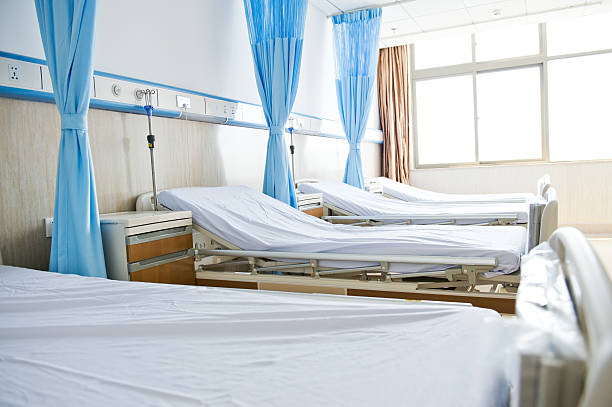Starting a hospital in Kenya is a significant endeavor that requires meticulous planning, adherence to regulatory standards, and a substantial financial commitment. The Kenya Medical Practitioners and Dentists Council (KMPDC) governs the establishment and operation of medical facilities, ensuring they meet the requisite standards to provide quality healthcare services. This comprehensive guide outlines the essential requirements, licensing procedures, and financial obligations involved in setting up various medical institutions in Kenya.
Understanding the Kenyan Healthcare System
Kenya’s healthcare system is structured into six levels, each representing a different tier of service delivery:
- Level 1: Community Health Units
- Level 2: Dispensaries
- Level 3: Health Centers
- Level 4: Sub-County Hospitals and Private Medical Centers
- Level 5: County Referral Hospitals
- Level 6: National Referral Hospitals (e.g., Kenyatta National Hospital)
Each level has specific licensing requirements, fees, and operational standards that must be met to ensure compliance and the delivery of quality healthcare services.
Key Requirements for Establishing a Medical Facility
To establish a medical institution in Kenya, you must fulfill the following criteria:
1. Business Registration
- Entity Formation: Register your hospital as a legal business entity through the Business Registration Service (BRS). This involves obtaining a Certificate of Incorporation from the Registrar of Companies and selecting an appropriate business structure, such as a Sole Proprietorship, Partnership, Limited Company, or Non-Governmental Organization (NGO).
2. Licensing from KMPDC
The KMPDC is responsible for the approval and licensing of medical institutions. The process includes:
- Application Form: Purchase Form IX for Ksh 1,000. Complete the form and have it signed by the area Medical Officer of Health (MOH) or the Provincial Medical Officer (PMO).
- Inspection Report: Submit a detailed inspection report signed by the inspection team.
- Professional Qualifications: Provide certified copies of professional qualifications and licenses for all medical personnel, including Private Practice Licenses for doctors and nurses.
- Architectural Plans: Submit building architectural plans approved by relevant authorities.
- Facility-Specific Requirements: For hospitals, provide proof of mortuary/storage facilities for deceased individuals and ensure a pharmacy operated by a qualified pharmacist or pharmaceutical technologist is in place.
3. Staffing Requirements
Ensure your facility is staffed with qualified and registered medical professionals:
- Medical Practitioners: Doctors and specialists must be licensed by the KMPDC.
- Nurses: Registered and licensed by the Nursing Council of Kenya.
- Pharmacists: Licensed by the Pharmacy and Poisons Board.
- Laboratory Technologists: Licensed by the Kenya Medical Laboratory Technicians and Technologists Board (KMLTTB).
4. Facility Standards and Infrastructure
Your facility must adhere to the hygiene, safety, and operational standards set by the Ministry of Health. Key considerations include:
- Inpatient Care: Adequate admission beds and, for higher-level hospitals, an Intensive Care Unit (ICU).
- Medical Services: Installation of a pharmacy, radiology unit, and operating theatre if surgical services are offered.
5. Inspection and Accreditation
Before licensing, a KMPDC inspection team will assess your facility to ensure compliance with all regulatory standards. A comprehensive inspection report must be submitted as part of the licensing process.
Licensing Fees for Medical Facilities
The KMPDC has outlined specific fees for the application, registration, and annual licensing of various medical facilities. Below is a summary of these fees:
| Facility Type | Application Fee (Ksh) | Registration Fee (Ksh) | Annual License Fee (Ksh) |
|---|---|---|---|
| Dispensary | 1,000 | 5,000 | 5,000 |
| Medical Clinic | 1,000 | 5,000 | 10,000 |
| Eye Clinic | 1,000 | 5,000 | 10,000 |
| Eye Hospital | 1,000 | 10,000 | 30,000 |
| Health Centre | 1,000 | 5,000 | 10,000 |
| Medical Centre | 1,000 | 5,000 | 10,000 |
| Nursing Home | 1,000 | 10,000 | 20,000 |
| Maternity Home | 1,000 | 10,000 | 20,000 |
| Funeral Home (Standalone) | 1,000 | 10,000 | 20,000 |
| Level 3 Mission Hospital | 1,000 | 10,000 | 20,000 |
| Level 4 Mission Hospital | 1,000 | 10,000 | 20,000 |
| Level 4 Hospital | 1,000 | 20,000 | 50,000 |
| Level 5 Hospital | 1,000 | 30,000 | 80,000 |
| Level 6 Hospital | 1,000 | 30,000 | 100,000 |
| Medical or Dental School Accreditation | 15,000 | 50,000 | N/A |
Note: Fees are subject to change; always consult the KMPDC for the most current information.
Additional Regulatory Approvals (Continued)
In addition to KMPDC licensing, hospitals and medical facilities in Kenya must comply with several other regulatory requirements:
1. County Government Approvals
- Obtain a Single Business Permit from the county government where the hospital is located.
- Pay land rates and rental fees if applicable.
2. National Environment Management Authority (NEMA) Certification
- Submit an Environmental Impact Assessment (EIA) Report for approval.
- Obtain waste disposal licenses for medical and hazardous waste management.
3. Ministry of Health Approvals
- Adhere to guidelines for infection prevention and control.
- Comply with the Public Health Act on sanitation, hygiene, and waste disposal.
4. Pharmacy and Poisons Board Licensing
- If the hospital has a pharmacy, it must be licensed separately.
- Ensure a qualified pharmacist or pharmaceutical technologist operates the pharmacy.
5. Kenya Revenue Authority (KRA) Compliance
- Obtain a PIN certificate and register for Value Added Tax (VAT) if applicable.
- Comply with PAYE (Pay As You Earn) requirements for hospital employees.
6. Medical Insurance Accreditation
- Register with the National Health Insurance Fund (NHIF) to allow patients to use NHIF coverage.
- Partner with private medical insurers to expand service coverage.
Cost of Starting a Hospital in Kenya
The cost of establishing a hospital varies depending on size, location, and services offered. Below is a rough estimate of costs for different types of medical facilities:
| Type of Facility | Estimated Cost (Ksh) |
|---|---|
| Dispensary | 2M – 5M |
| Medical Clinic | 5M – 10M |
| Health Centre | 10M – 30M |
| Maternity/Nursing Home | 20M – 50M |
| Level 4 Hospital | 50M – 150M |
| Level 5 Hospital | 200M – 500M |
| Level 6 Hospital (Specialized/National Referral) | 500M+ |
Note: Costs include land acquisition, construction, medical equipment, licensing, and staffing.
Steps to Successfully Launch Your Hospital
- Develop a Business Plan – Outline your vision, financial projections, and operational strategy.
- Secure Financing – Consider bank loans, investor funding, or government grants.
- Choose a Strategic Location – Ensure accessibility for patients and compliance with zoning regulations.
- Obtain Licenses and Permits – Fulfill all KMPDC and county requirements.
- Hire Qualified Staff – Recruit doctors, nurses, lab technicians, pharmacists, and administrative personnel.
- Purchase Equipment and Set Up Infrastructure – Ensure availability of hospital beds, diagnostic tools, ambulances, and a pharmacy.
- Implement a Health Information System – Use digital patient records, billing systems, and insurance integration.
- Market Your Hospital – Create awareness through advertising, social media, and community outreach.
- Establish Partnerships – Work with NHIF, private insurers, and pharmaceutical suppliers.
- Ensure Compliance and Quality Assurance – Schedule regular inspections and audits.
Starting a hospital in Kenya requires thorough planning, compliance with multiple regulatory bodies, and a significant financial investment. By following the outlined steps, obtaining the necessary licenses, and ensuring quality service delivery, you can establish a successful medical facility that meets the healthcare needs of Kenyans.




